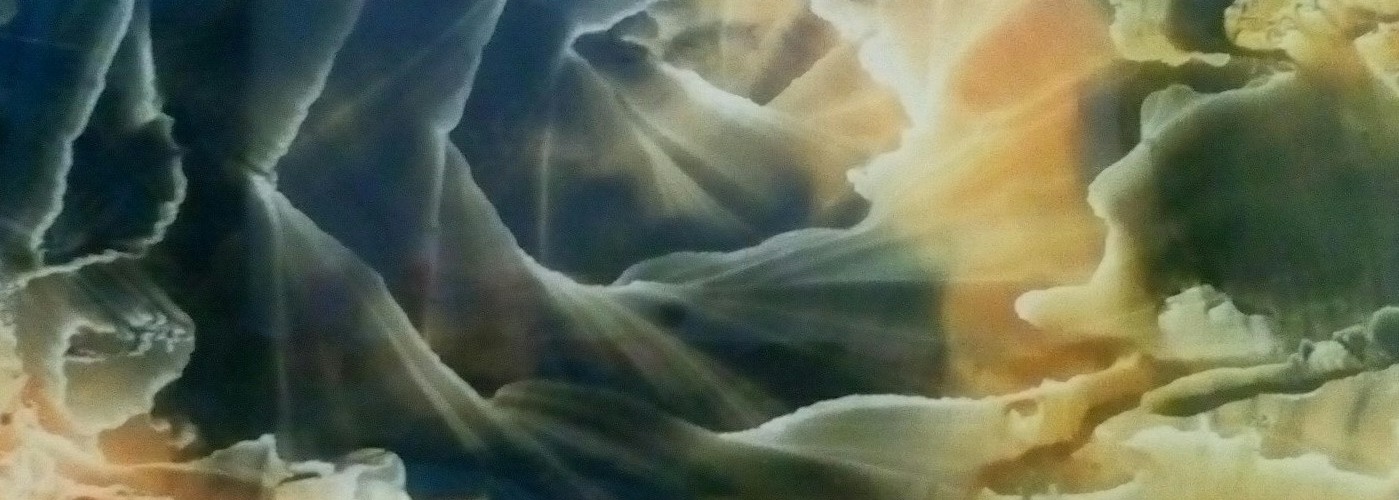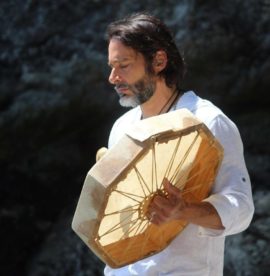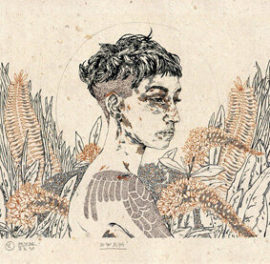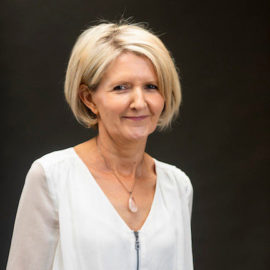
Daniel Léonard
Offers Reiki and shamanic ceremony and teaching, based in Baja Mexico; also my shaman teacher.
Elaine Hyde
Offers shamanic ceremony and assistant teaching, based out of Salt Spring Island; also my shaman teacher.
Myorei Zeraffa
Offers distance Reiki sessions and teaching, based out of Frelighsburg, Québec; my Reiki teacher.
Dwam Ipomée
Offers shamanic ceremony, tattooing and photography services, based out of Vancouver but citizen of the world.
Bríd Shine
Offers shamanic ceremony, Reiki sessions and bereavement/grief counselling, based in Cowichan Bay.
Question: Body parts and emotions, how are they correlated?
The Joyful Approach does a wonderful job outlining how and where emotions can be stored in the body.
The correlation between emotions and body is fascinating, especially when you start to see patterns through extraction ceremonies. Consider the side of the body. Is the sensation on the masculine (right) or feminine (left) side of the body? Explore the pain you feel. What does that body part or organ do? How is its function—or lack thereof—correlated to your emotions? It's such profound work and something we can't neglect. After all, we are feeling beings.
What we don't process in our felt sense/bodily sensations will come into another form (pain, discomfort, disease) until we see it, feel it and let it go. When we can fully acknowledge that much of our life is in service of finding our authentic selves, we can walk this path more patiently, compassionately and with heart. A great link and read for anyone curious about what this or that in the body could mean.
Question: Any books you recommend with practical info on healing trauma?
I recently finished the book Waking the Tiger by Peter Levine. In it, Levine, a psychotherapist, relates an animal's trauma experience to the human body:
Imagine an impala is being chased by a cheetah. Naturally, impalas herd as a group in order to thrive, survive, escape attack or death. Imagine though one impala trips and falls. The animal is therefore keenly aware that it may not survive the chase. So rather than scare or flee, the impala freezes. Immobility, an involuntary response of an overworked nervous system, gives the animal two choices. One, it allows the impala to dissociate and not feel the full affect of its imminent death. Or, should the cheetah make a lapse in judgement, gives the impala a split second to come back to life and run away unscathed.
Now picture a deer eating in a meadow. The doe hears a sudden noise and freezes. She scans the tree line and field before her. Deciding there's no imminent danger, her body shakes to discharge the accumulated energy due to fright and returns back to grazing.
We are no different than the impala or deer. When faced with trauma, we can fight, flee or freeze. The last option, however, doesn't allow the nervous system to dispel the energy it absorbed when threat surfaces. As such, the body absorbs it and trauma symptoms soon ensue. The more energy we gather without discharging it, the more hyper-aroused we are, the more chronic our behaviour is and we can't reset.
Thus the felt sense. The body is ripe with sensations. Dull, sharp, heavy, tense, big, small, warm, cool. Anything and everything is sensed in and on the body. When we are traumatized, naturally, our body reacts. Our breath and heart rates quicken. We sweat. Our throats close. In short, we feel it. However, we don't always allow the body to cycle through its sensations fully, and thus, hold onto traumatic energy.
According to Levine, we must move through immobility to successful escape as a means of empowerment and to release trauma in the body. When a threat is sensed, our nervous system unconsciously puts us in a hyper aroused state. It is here that we often dissociate to self-protect from further escalation and build up tension in the body (as a false sense of defense) through constriction. In the end, we walk blindly into immobility, and hence helplessness, and so the cycle repeats. Only in feeling the sensations of the body and letting them run their course, often only in minutes, can we discharge the energy we captured at the time of threat.
It is essential that the unresolved activation locked in the nervous system be discharged. This transformation [renegotiation] has nothing to do with memory. It has to do with the process to complete our survival instincts.
Through conscious awareness, the felt sense in the body can provide a gentle energetic release, or as Levine calls it, renegotiation. If not, we fall into the trap of avoidance. It's here we stay when fear and terror overwhelm us; while active escape (fight or flight) is exhilarating and a pathway to acceptance of personal authority. To this point, finding, knowing or understanding the source of arousal isn't important. Rather, focus on the felt sense and allow the body to feel into the moment without emoting, rationalizing or condemning its bodily sensations.
A must read for healers and meditators who want to better understand the correlation between trauma, body sensations and a pathway to healing.
Question: Great read on birth and death?
My dear friend Bríd Shine wrote a lovely book on her work in bereavement and palliative care entitled Between World: Shared Reflections of a Spiritual Midwife. Spiritual midwife! Can't get enough of that...
What most struck me in the book was the telling of the role we play for those who are passing. It's not about us—and how their leaving impacts our lives—but about holding space so their spirits may fulfill their journey to the other side with deep surrender and love. Beautiful. A must read for anyone who's lost a child, sibling, parent, partner, friend or loved one, or about to cross over themselves.
Question: Who is crow woman?
Crow is a profound spirit that guides us into the unknown and the mystery of life while protecting our sacred law records. Here is poetic prose sharing the beauty and power of this medicine as crow woman.
I am not a soft woman. I am rarely tender, and if you have witnessed tenderness in me, you are one of very few. I am not a woman who oscillates when making big decisions. I make them. Full stop, with an ordinate and thriving will. I am a woman who makes mistakes and learns from them the first time. I am a woman whose freedom and autonomy are invaluable, yet with the setting Sun, I return to the safety and warmth of my nest, in sync with the rhythm of Life. I am a woman who is frighteningly precise and efficient. I am a woman who dares to cull the crap. I sever like a Queen and dance on the bones. I am a woman who looks for potential in the carcass and builds castles from the scraps. I am a woman who seeks answers, but accepts when there aren’t any. I am a woman with a great deal of self-discipline but equal amounts of ‘fuck it’. I am a woman who despises being told, but appreciates being shown. I am a woman who shape-shifts in the fire. I am a woman who finds humour in the mundane. I laugh when I probably shouldn’t and cackle to alter the climate. I am a woman who dances between the realms and upholds the law of the veil. I am a woman who dreams deeply, and weaves the divine vision into existence with devilish ease. I am a woman with a brave spirit and brilliant, calculating mind. Wild plume. Sharp talons. Look me too long in the eyes.
Taken from treeofstarsastrology.com.




